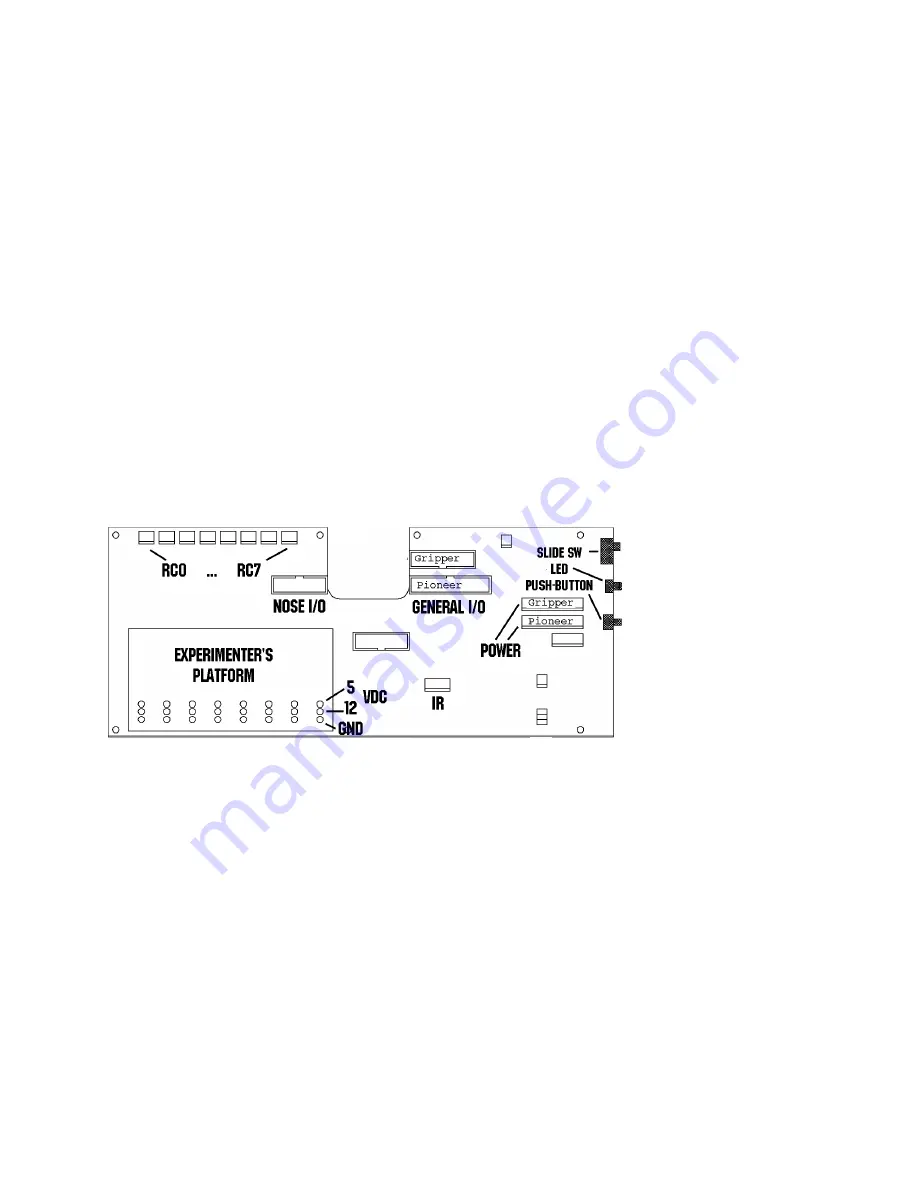
Overview
4
In transition from the fully down/open position to their up/closed state, the Gripper
paddles close together horizontally until they pinch an object or close on themselves. At
that point, the entire Bar and Gripper Assembly rises up vertically—with or without an
object in its grasp. Under software control, the Gripper then rises to a special “carry”
position or all the way to the top of the Gripper case 4 inches (10.5 cm) off the floor to its
closed/up position. It is not normally possible to open the Gripper at this state.
The reverse cycle lowers the Gripper Bar and paddles to the bottom of the assembly,
whereupon the paddles separate, dropping any contents, and open to their fully
down/open position.
Two “bump” switches—one on each paddle tip—sense contact with objects. IR-based
“break beams” embedded at the front and back of each paddle sense objects between and
within the Gripper’s grasp.
Three other switches sense the Gripper’s paddle positions. One switch inside the Bar is
on when the Gripper paddles are in their fully open position. Another at the top of the
Bar toggles on when the Gripper reaches its fully up position. A third “carry” switch,
located behind the Bar, indicates when the Gripper is between 1.5 and 2 inches (4-5cm)
off the floor.
2.3.2 Experimenter’s Module Description
The Experimenter’s Module includes several additional features that users may enable
through the Pioneer I/O controls: There are green “directional” LEDs embedded in the
tip of each paddle and at the top of each side, facing front on the Gripper’s back plate.
On the left side of the Gripper, there is a speaker, an SPST on-off slide switch, a
momentary push-button switch, and another LED (amber).
Figure 1-4. Pioneer 1 Experimenter’s Module
Inside and on the Experimenter’s Module is a bank of eight RC-servo controller ports.
Layout/solder pads with DC power and I/O port connections supplied by the Pioneer
microcontroller also are on the Module card, as well as eight multiplexed analog-to-







































